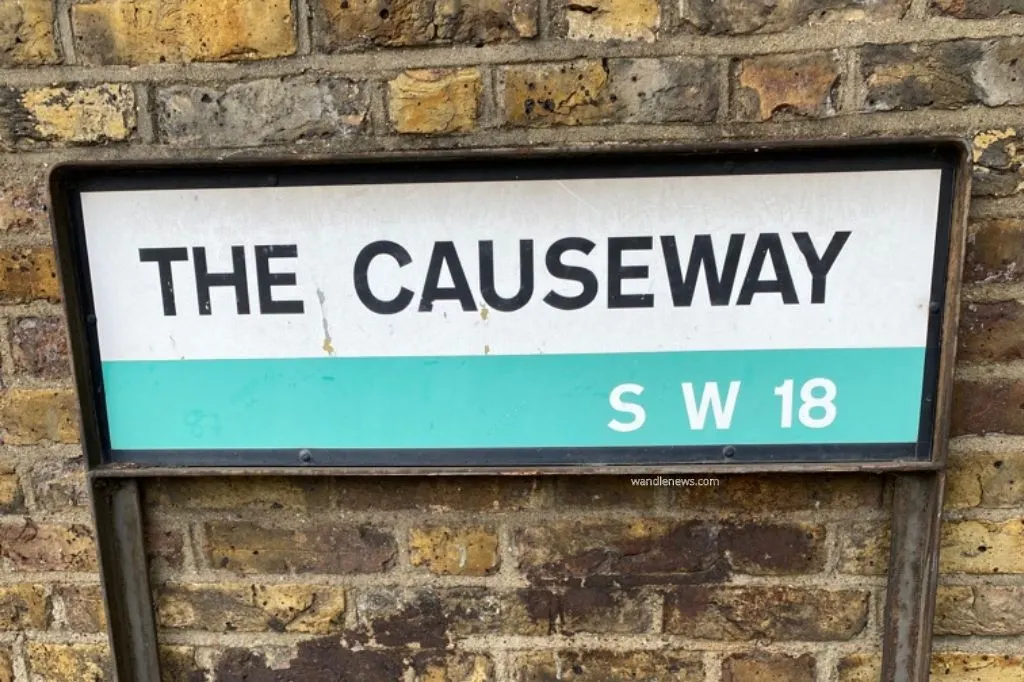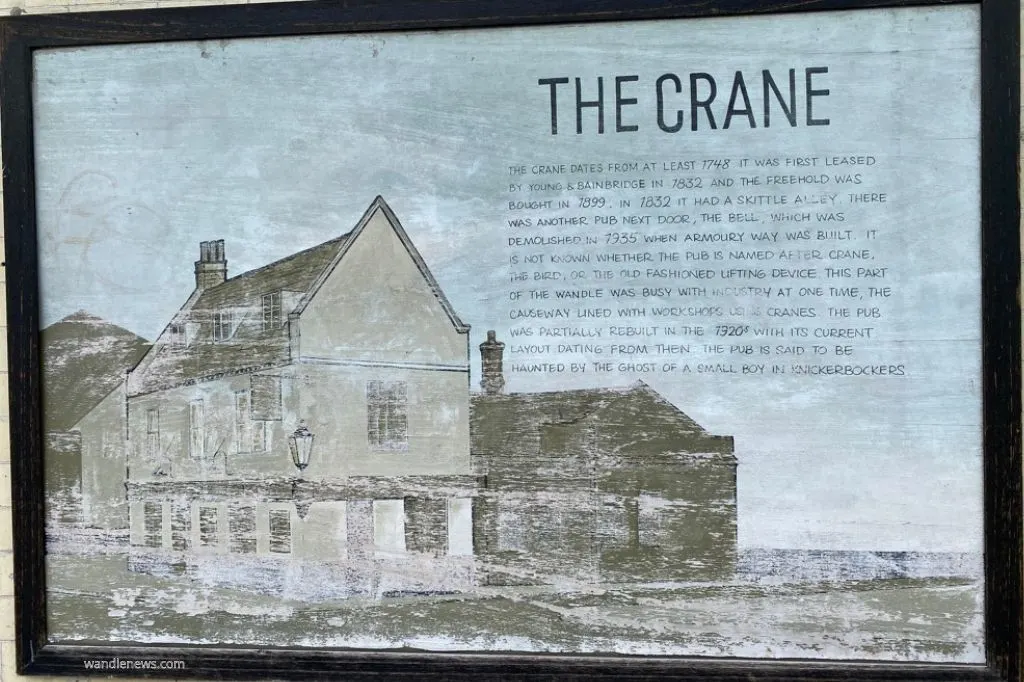The River Wandle meets the Thames at The Causeway in Wandsworth where it splits into a delta. At this point of the Wandle Trail you can see The Spit nature reserve, and the bell that was rung by the tides.

The Causeway in Wandsworth
The Causeway is a small path that leads away from the A3 road and follows the Wandle River onto a small island. This path was once the road from the river Thames to the village square. In medieval times a mill stood here to harness energy from the rise and fall of the tides.
The Causeway island was also a sacred site during the Iron Age where druids made offerings here by throwing swords, axes and shields into the river. The Battersea Shield, one of Britain’s most significant pieces of Celtic art, was actually found at this point where the River Wandle enters the Thames.

The Causeway once crossed the entrance to the Surrey Iron Railway, a horse drawn plateway that went from Wandsworth to Mitcham and Croydon.
There also once stood a pub called the Bell Inn on Wandsworth Plains , at the start of The Causeway. The inn can be seen in an old photograph taken from the book “From London-South of the Thames” by Sir Walter Besant, published in 1912.

Bell Lane Creek
At The Causeway the main stream of the Wandle River diverts through a sluice and passes through Bell Lane Creek. The sluice was actually taken from one of the last mills that existed on the Wandle, which closed shortly after world war two.
At the time when the sluice was installed, it was painted gold and mounted on a stone arch carved with the words “Salmon Swan Otter Eel Heron”. Below the arch an old church bell was hung, with words “I am rung by the tides” inscribed on it.

A turbine was originally installed in the sluice to generate electricity from the flowing water. This was the first time renewable energy had been used in a European inner city. A trigger system was also created so that the bell would strike as high tide flowed into the delta.

Today the gold paint has completely worn off, and the turbine no longer produces electricity to ring the bell at the tides. This is because the turbine depended on the flow of the river to produce electricity, and this was disrupted by rubbish being dumped in the river, and a weir being raised downstream.

The words “Salmon, Swan, Otter, Heron, Eel’ were inscribed on the arch to celebrate the wild variety of wildlife that make the river its home. Large numbers of eels can be found in Bell Lane Creek since the vegetation on the river’s walls, provide a good food source for them.

The Spit Nature Reserve
The Causeway Island is also home to The Spit nature reserve. The nature reserve is accessible via a footbridge over the river and wooden boardwalk. It contains shrubs and three large white willow trees.

There is also a sculpture on The Spit called “Sail” by Sophie Horton. It is in the shape of a dinghy sail. The convex side is blue and has the design of a sail’s seams. The concave side is silver and has markings resembling the scales and tail of a fish.


The Spit was created to attract wildlife, particularly birds. The Smelt Dace and Flounder spawn in the river have brought a variety of different birds to the area, including the Great Crested Grebe.

Following the Wandle Trail From the Causeway
If you are starting the Wandle Trail from The Causeway, you will follow the path round to the A3 main road, and continue down Wandsworth Plain until you reach Wandsworth High Street. Once you are here you may wish to visit the site of the old Ram Brewery in Wandsworth. The site is now the Ram Quarter which contains cafes, and restaurants, as well as Sambrook’s Brewery, and the Ram Inn which remains on its original site.

The Crane Pub Wandsworth
Before you cross the A3 you will see The Crane pub. The Crane is the oldest pub in Wandsworth, being built in 1738. It is haunted by two ghosts: a boy wearing knickerbockers and a lady in the attic who passes through a wall.
The pub was leased by Young’s brewery in 1832 who went on to buy it in 1889.

This post was about The Causeway in Wandsworth
If you are starting the Wandle Trail from the Causeway, it is easily walkable from Wandsworth Town Station.
